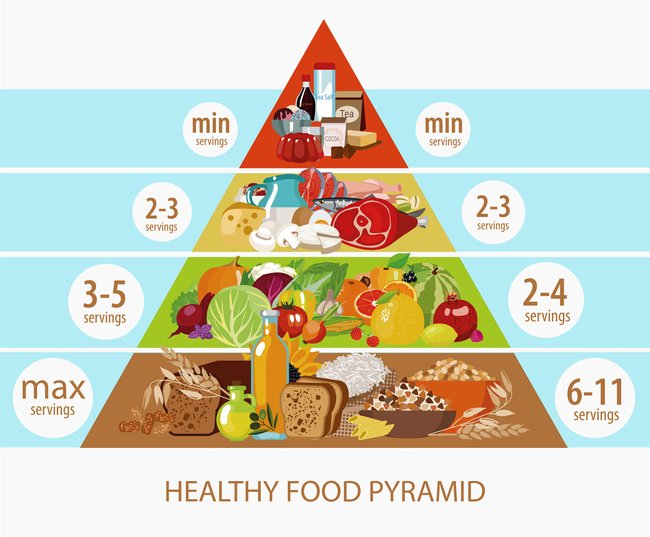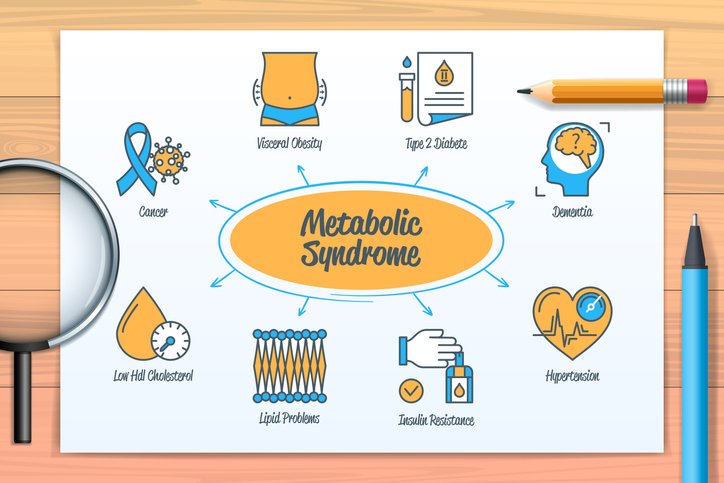White Rice Versus Saturated Fat: And The Winner Is...
Health experts and doctors have long touted the benefits of grains, with rice being a particularly healthy option. They also caution against consuming too much fat, particularly saturated fat. In recent years, low-carb-high-fat diets like keto have gained popularity because they reverse high blood sugar and blood pressure and improve BMI. This has led many to question the traditional belief in high-grain, low-fat diets.
Ancel Keys
The long-held belief that saturated fat is responsible for heart disease goes back to the 1950s with Ancel Keys. With two poorly designed studies, he could barely attract support from the scientific community. He then approached the American Heart Association and the government, and they embraced his Diet-Heart-Hypothesis. It became dogma. The food pyramid (now My Plate) was built around a low-fat high carbohydrate (mostly grains) diet and was constructed with Keys’ hypothesis in mind.
We Still Embrace Low Fat Grain-based Diets
THE FIRST EIGHTEEN HITS SUPPORTED HIS THEORY when I typed Keys’ name into Google. The nineteenth was entitled How Ancel Keys Brainwashed the Masses Into Fearing Meat (He's Wrong), and the next one was entitled Records Found in Dusty Basement Undermine Decades of Dietary Advice. How many people will read 17 articles and then decide the 18th and 19th contain the truth? Nobody, and so the theory is still accepted as correct. But things are changing.
The PURE Study
According to the PURE study, there is a connection between the amount of fat and carbohydrates consumed, cardiovascular risk, and mortality. The study indicates that increasing total fat intake is associated with decreased mortality and that saturated fat intake does not significantly impact mortality, even at high levels. This association is the opposite of what most people expect. However, it's common for people who consume over 30% of their daily calories from fat not to experience adverse health effects. In fact, research has revealed that individuals who consume approximately 45% of their daily calories from fat have the lowest mortality rate for all causes, the highest amount observed. 1 Another study, this one a meta-analysis by De Souza and colleagues, found that high dietary intake levels are not correlated with cerebrovascular events (fatal and non-fatal strokes) or new cases of diabetes. DeSousa concluded that saturated fats are not associated with all-cause mortality, cardiovascular disease, chronic heart disease, ischemic stroke, or type 2 diabetes. However, he found that trans fats are associated with all-cause mortality, total cardiovascular disease, and chronic heart disease mortality. Some of the initial studies that concluded fats were bad did not differentiate trans fats from saturated fats, causing misinterpretation of findings, and saturated fats got the blame, not trans fats. 2
Processed Carbs and Disease
If more than 60% of daily calorie intake comes from carbohydrates, mortality rates, and cardiovascular events may increase, which is also the opposite of average expectations by the general public.
It has been observed that people living in rural areas of the eastern region of Asia who consume 70% or more of their caloric intake from carbohydrates, mainly boiled rice, are at risk of lacking essential nutrients and protective elements present in a diverse diet. This is because boiled rice has a high glycemic index. The higher the glycemic index, the faster the blood sugar rises, leading to potential high blood sugar, metabolic issues, diabetes, and heart disease. The researchers concluded that the increase in mortality among this population group is believed to be caused by the limited nutritional value of the carbohydrates consumed rather than their excess. However, they missed the deleterious effects processed carbohydrates can have on our metabolism and health. Incidentally, tooth decay began with the consumption of cereal grains.
White Rice and Disease
One of the earliest studies on the glycemic index showed that the glycemic index of rice was higher or similar to white bread. Consumption of white bread has also been associated with an increased risk of diabetes. Sadly, during the last four to five decades of replacing hand-pounded or undermilled rice with highly milled white rice, the prevalence of diabetes in urban areas in India increased from 2% in the 1970s to 25% in 2015 and in rural areas from 1% to 14–16%. Consequently, in 2020, using the data from the PURE study, researchers looked at the association of white rice with the risk of diabetes. They tracked over 6,000 individuals for over nine years who started without diabetes and ended up with it. They found that higher consumption of white rice was significantly associated with an increased risk of incident diabetes in the PURE cohort after adjusting for lifestyle and dietary factors. The findings should not be a surprise. Continually spiking blood sugar levels with high glycemic meals leads to insulin resistance, the basis of diabetes. Diabetics are likely candidates for heart disease.
The Chinese Paradox Explained
In China, there was no significant association between white rice consumption and incident diabetes in the PURE data. 3 However, around 30 years ago, China had low rates of overweight and obesity compared to other countries. Today, almost half of the Chinese population is overweight and at high risk of cardiometabolic disease. I believe this is because from 1982 to 2011, there was a significant increase in fat intake in the form of soybean oil, with energy intake from fat doubling from 18% to 32% (37% in Chinese megacities), and daily edible oil intake nearly tripling from 18 to 49 grams. At the same time, the total daily energy from carbohydrates decreased significantly from 72% to 54% (47% in Chinese megacities). The processed carbohydrate consumption fell, while soybean oil increased. If carbs were driving heart disease, why did it increase? The oil is partially to blame.
Soybean Oil
In China, as in the rest of the world, soybean oil consumption has skyrocketed. Studies suggest that this shift towards increased low-quality fat intake in the form of soybean oil and decreased carbohydrates might be a key factor in the rise of obesity and cardiometabolic disease. Soybean, canola, corn, sunflower, and cottonseed oil are mainly made of pro-inflammatory omega-6 oils (linoleic acid). This increase is responsible for much of the rise in obesity, diabetes, and heart disease. Too much omega-6 oil oxidizes LDL and ruins energy production by the mitochondria. Both are responsible for metabolic dysfunction and heart disease. For more information about the dangers of omega-6 overconsumption, click here and here.
Polyunsaturated Overdose
The human body needs foods containing omega-6 and omega-3 oils because we can't make them. Thus, they are considered essential fatty acids. However, traditionally, they were consumed in low doses in a ratio of no greater than four parts omega-6 to one part omega-3. The world is now overwhelmed with foods made with omega-6 oils, predominantly soy, but also corn and canola. As a result, our ratio has shot up to over 15:1, causing inflammation and damage to the mitochondria and blood vessel linings.
The Minnesota Coronary Experiment
Omega-6 oils, also called polyunsaturated fats, have been touted as a preventative for heart disease. However, the best study ever conducted comparing polyunsaturated oils to animal fats, called the Minnesota Coronary Experiment, failed to show evidence that mortality benefit exists from adding linoleic acid, as was stated in the original paper, and the possibility of increased risk of death in older adults is suggested. The results ran so contrary to the prevailing theory that polyunsaturated oils decreased heart disease the researchers failed to publish their results for many years.
Putting It All Together
We receive a spike in our blood sugar by eating processed carbohydrates like polished white rice, damaging our health. We convert it to triglyceride for energy or store it as fat. To accomplish this, we raise our insulin level. With repeated meals containing processed carbs, our insulin remains high, as well as our triglycerides. In short, we get insulin resistance and poor metabolism (metabolic syndrome).
However, when we eat healthy fats like coconut oil or animal fat, insulin falls, and our cholesterol rises, especially our HDL, the so-called good one. As I have written about recently, the ratio of triglyceride to HDL is statistically a good predictor of potential cardiac disease. This is because it reflects the amount of carbohydrates and fat we eat. A highly processed carb diet will raise the triglycerides and lower the HDL levels. It will also increase our fasting insulin level, which indicates metabolic problems and inflammation. They are the main causes of cardiovascular disease, obesity, and diabetes. Conversely, increasing fat intake while avoiding the bad omega-6 varieties and processed carbs will lower triglycerides and raise HDL, indicating a healthier metabolism and lower inflammation.
Conclusion
High fasting insulin is a warning sign of poor metabolism. It is a result of too many high-glycemic meals. Additionally, the outcome of such a diet is high triglycerides. The ratio of triglycerides to the amount of HDL we have grows, leading to metabolic problems. As it turns out, fasting insulin and the triglyceride to HDL ratio are the best indicators of potential heart disease. In reality, heart disease results from bodily inflammation brought on by highly processed carbs, low healthy fats, and higher than normal omega-6 in the diet. The heart disease and metabolic syndrome story is more complex than I have explained in this post, but we should limit our processed carbs and omega-6 and include animal fats in our diet.










